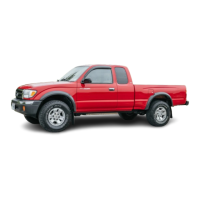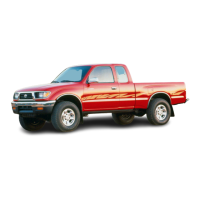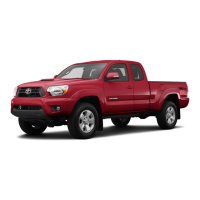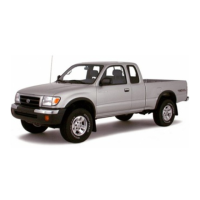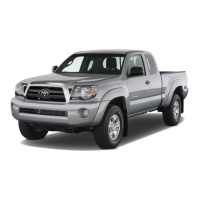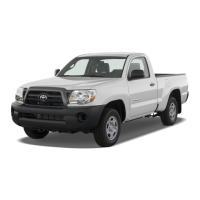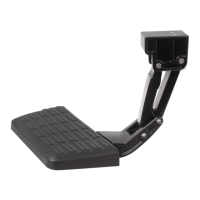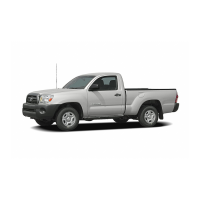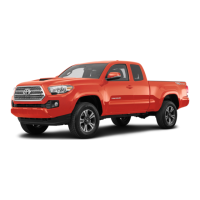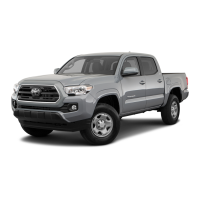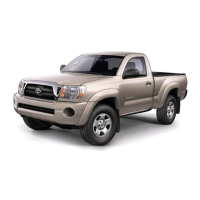’98 Tacoma (U)
137
Part 2
INFORMATION
BEFORE DRIVING
YOUR TOYOTA
Off- road vehicle precautions
Break- in period
Fuel
Operation in foreign countries
Three- way catalytic converter
Engine exhaust cautions
Facts about engine oil
consumption
Twin ground electrode spark
plugs
Brake system
Brake pad wear limit indicators
Luggage stowage precautions
Rear step bumper
Your Toyota’s identification
Suspension and chassis
Types of tires
This vehicle is one of the class of ve-
hicles which have higher ground clear-
ance and narrower tread in relation to
the height of their center of gravity to
make them capable of performing in a
wide variety of off-road applications.
Specific design characteristics give it a
higher center of gravity than ordinary
cars. An advantage of the higher
ground clearance is a better view of the
road allowing you to anticipate prob-
lems. It is not designed for cornering
at the same speeds as conventional
two-wheel drive vehicles any more than
low-slung sports cars are designed to
perform satisfactorily under off-road
conditions.
CAUTION
Always observe the following precau-
tions to minimize the risk of serious
personal injury or damage to your ve-
hicle:
Avoid sharp turns or abrupt maneu-
vers, if at all possible. As with oth-
er vehicles of this type, failure to
operate this vehicle correctly may
result in loss of control or vehicle
rollover.
Avoid loading any items on the roof
that will make the center of gravity
even higher.
Always slow down in gusty cross-
winds. Because of its high center of
gravity, your vehicle is more sensi-
tive to side winds than an ordinary
passenger car. Slowing down will
allow you to have much better con-
trol.
Do not drive horizontally across
steep slopes. Driving straight up or
straight down is preferred. Your ve-
hicle (or any similar off-road ve-
hicle) can tip over sideways much
more easily than forward or back-
ward.
Off-road vehicle precautions
(four-wheel drive models only)
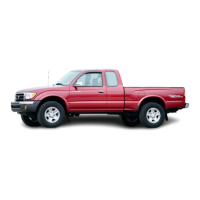
